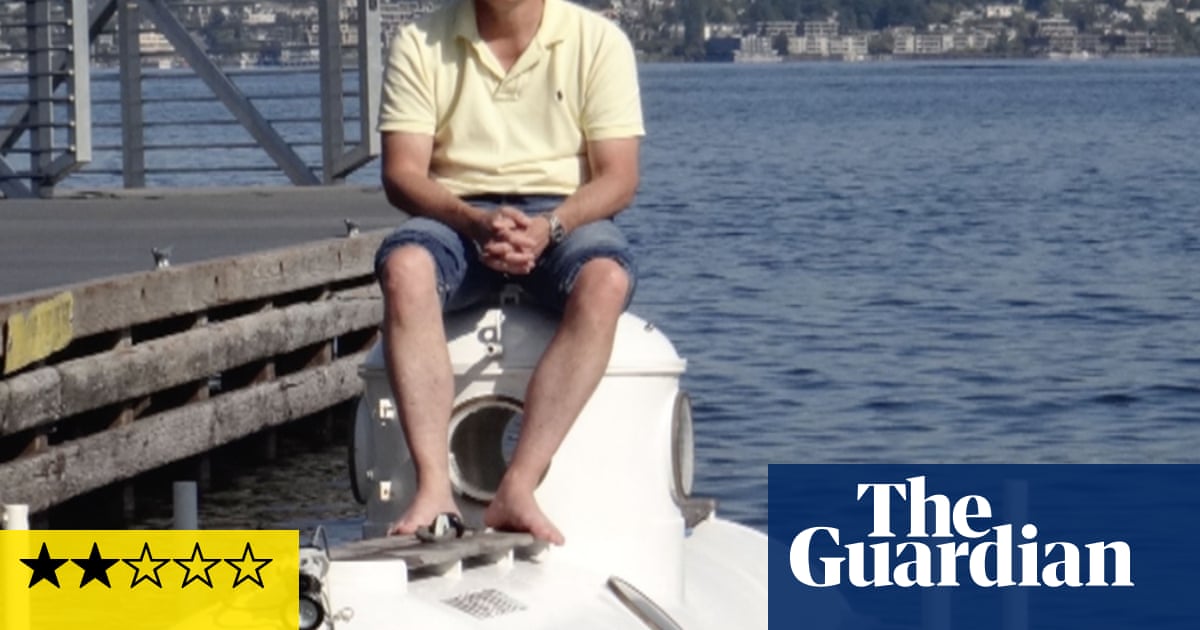“What was that bang?” Implosion, BBC2’s documentary about the doomed commercial submarine Titan and its owner and pilot Stockton Rush, has footage shot on 18 June 2023 at the very instant when, on a sightseeing trip 3,800m below the surface of the Atlantic, Titan suffered a fatal rupture and the five people inside it died. There were no cameras on the sea floor and any pictures taken by Titan’s occupants were destroyed along with it, but there is film that contains what we now know to be audio of the craft’s last moment. Rush’s wife, Wendy, is aboard the mission’s support ship, in radio contact, when she hears a noise.
At that point, Wendy Rush looks more confused than alarmed. A contributor to the film likens the sound to a door slamming, but it’s less dramatic than that: it’s more of a muffled thud, which was ambiguous enough for it not to be assumed immediately that Rush and his passengers were dead. Instead, the unknown fate of Titan topped global news reports for four days, until debris was finally found.
That clip of Wendy Rush is eerily low-key but, as Implosion tells it, the story of Titan is one that suits an unspectacular, perversely almost anticlimactic ending, because it’s a tale of hubris and negligence that isn’t coloured with much complexity. It’s all the more sad and enraging that five people lost their lives in a tragedy that, in retrospect, was bound to happen. Implosion searches for a grander narrative, but it doesn’t seem to be there.
Having sketched the life of Stockton Rush, a wealthy man who dreamed as a youth of going into space before he noticed more accessible “cool stuff” way down below the ocean, the programme documents some of the warning signs he ignored as he planned prestigious expeditions to view the wreckage of the Titanic. Rush, who felt the relevant regulation and certification processes were an unnecessary fuss, favoured carbon fibre as the material from which his tiny submarine’s hull would be made, an unusual choice because it is known to behave erratically under extreme pressure: its layers can separate, a process known as delamination.
Numerous contributors who were involved in Titan’s test dives recall that those rehearsals were marred by passengers raising safety concerns. We are able to read extracts from one expert’s series of warning emails that were ignored; another alleges she spoke up in person, only to be told she lacked “an explorer mindset”. There is footage of Stockton Rush reassuring interested parties that it is normal for submarines to make scary noises as water pressure changes and metals contract; the programme’s interviewees disagree, and we see evidence that a cracking sound heard on one of the last missions should have been interpreted as a harbinger of delamination.
So we have the how: a man took four others to the bottom of the sea in a submarine that was clearly unsafe. What Implosion struggles with is the why. It never quite gets to the bottom of how aware Rush was that Titan was a deathtrap. Did his self-image as an intrepid adventurer, the incentive of the six-figure sums he was charging his passengers, or the potential shame of abandoning the project actually stop him from seeing the obvious, or did he just not want to acknowledge it? One contributor asserts that Rush must have known that a dive would end in disaster before too long, which amounts to alleging that this was a criminal act by a man with a death wish. But a conclusively evidenced answer refuses to reveal itself.
There is talk of “ego” and “arrogance”, and of a family who were “upper crust” with “access to uber-elites”. The history of boundary-pushing exploration is indeed strewn with fascinating stories of privileged men who were brought up to believe they couldn’t fail, or who had some desperate emptiness inside them that made them lose their fear of death. But, especially because the money Rush was earning muddies the picture, we don’t know if he fits this narrative. It seems unlikely that much clarity will be provided by the US Coast Guard’s ongoing inquiry: Implosion has acquired film from inside the hearings, but if the producers assumed this exclusive access would automatically make their documentary illuminating, they were mistaken.
Nor does the programme give much insight into the people who willingly joined Rush on Titan’s final voyage. The only representative of the loved ones is Christine Dawood, whose husband, Shahzada, and 19-year-old son Suleman were both aboard. She speaks with noble dignity about a loss that seems to be deepened by the knowledge that she won’t ever be told why she had to suffer it. “We all know who the culprit is,” she says. “[It] does not change anything, does it?”
Implosion:The TitanicSub Disaster aired on BBC Two and is available on iPlayer.
